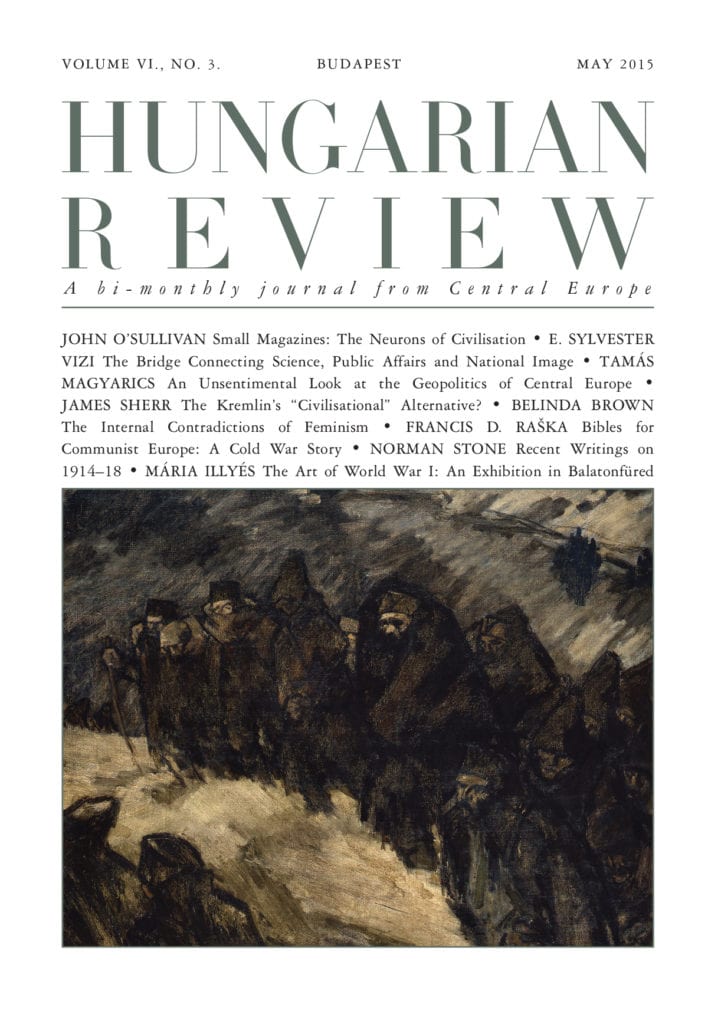EDITORIAL NOTE
Small magazines are the neurons of civilisation. They transmit vital messages between different cultural, academic, scientific and practical disciplines in much the same way as neurons link different parts of

Small magazines are the neurons of civilisation. They transmit vital messages between different cultural, academic, scientific and practical disciplines in much the same way as neurons link different parts of
Russia is a threat to European stability because it has mounted a frontal assault on the treaties, agreements and principles that ended the Cold War and defined Europe as we
The American approach to Europe in general, and to Central Europe in particular is more ambiguous than meets the eye. Europe was obviously downgraded in American foreign and security policy
The name of E. Sylvester Vizi is a familiar one in science and public affairs in Hungary and abroad. A full member of the Hungarian Academy of Sciences (MTA) and
British election result in parliamentary seats: Conservatives 331 (27 more than in 2010);Labour 232 (26 less than in 2010);Liberal Democrats 8 (49 less than in 2010);Scottish Nationalists 56 (50 more
One of the most striking things about feminism is the extent to which a body of beliefs based on notions of equality has produced new inequalities without hardly anyone seeming
Communist ideology and religion were strong adversaries. The severity of governmental oppression and discrimination against believers, however, varied in the different communist countries. One of the instruments of ideological repression
Orsolya Zsuzsanna Kovács: Polish Jigsaw. Fourteen Interviews Friendship. Seemingly a simple matter. After all, it does not require more than two people. Hence friendship is “as simple as ABC”, one
Roger Moorhouse, The Devils’ Alliance. Hitler’s Pact with Stalin 1939–1941* Historians investigating the causes of World War II seldom return to the treaty that made the beginning of hostilities possible:
The critical information that sealed the fate of Nazi Germany came from a team of fewer than six young civilians crowded in a small room in a ramshackle government building
I was not yet six years old when the Russians came to our provincial town in the northwest of Hungary. I don’t know the date but it was early spring,
World War I is a topic of currency these days, owing to its one hundredth anniversary and also prevailing global current affairs. The two go a long way to explaining
In London, at the beginning of each November, people wear a red poppy in their lapel, and nowadays this has to be explained to foreigners. On the part of France
Arts and Artists in World War I: the title alone of the exhibition, held at the Vaszary Villa in the town of Balatonfüred between October 2014 and January 2015, was
BELINDA BROWN studied at the Central European University in Warsaw and did her research on the role of women in the Polish underground movement. Her findings were published in The